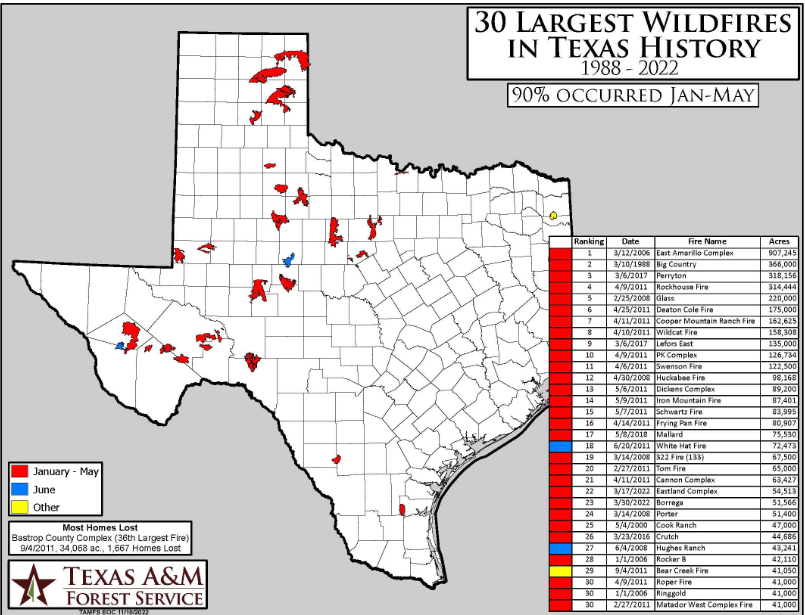The Largest Wildfire in Texas History was Started by Downed Powerlines
Written by Mary Wasson, Meteorologist
Last updated 3/9/2024, 10:07:40 AM
The largest wildfire in Texas state history, the Smokehouse Creek Fire, was caused by downed power lines near the small towns of Stinnett and Canadian. According to the Texas A&M Forest Service report, the power pole “appeared to be decayed at the base” and fell into a grassy area.
Utility company, Xcel Energy, which services that region, said last week that its facilities appear to have been involved in igniting the Smokehouse Creek fire. “ Xcel Energy disputes claims that it acted negligently in maintaining and operating its infrastructure; however, we encourage people who had property destroyed by or livestock lost in the Smokehouse Creek fire to submit a claim to Xcel Energy through our claims process,” they said in a statement.
The Smokehouse Creek Fire is one of the multiple fires burning in an outbreak of wind-driven wildfires just north of Amarillo, TX.
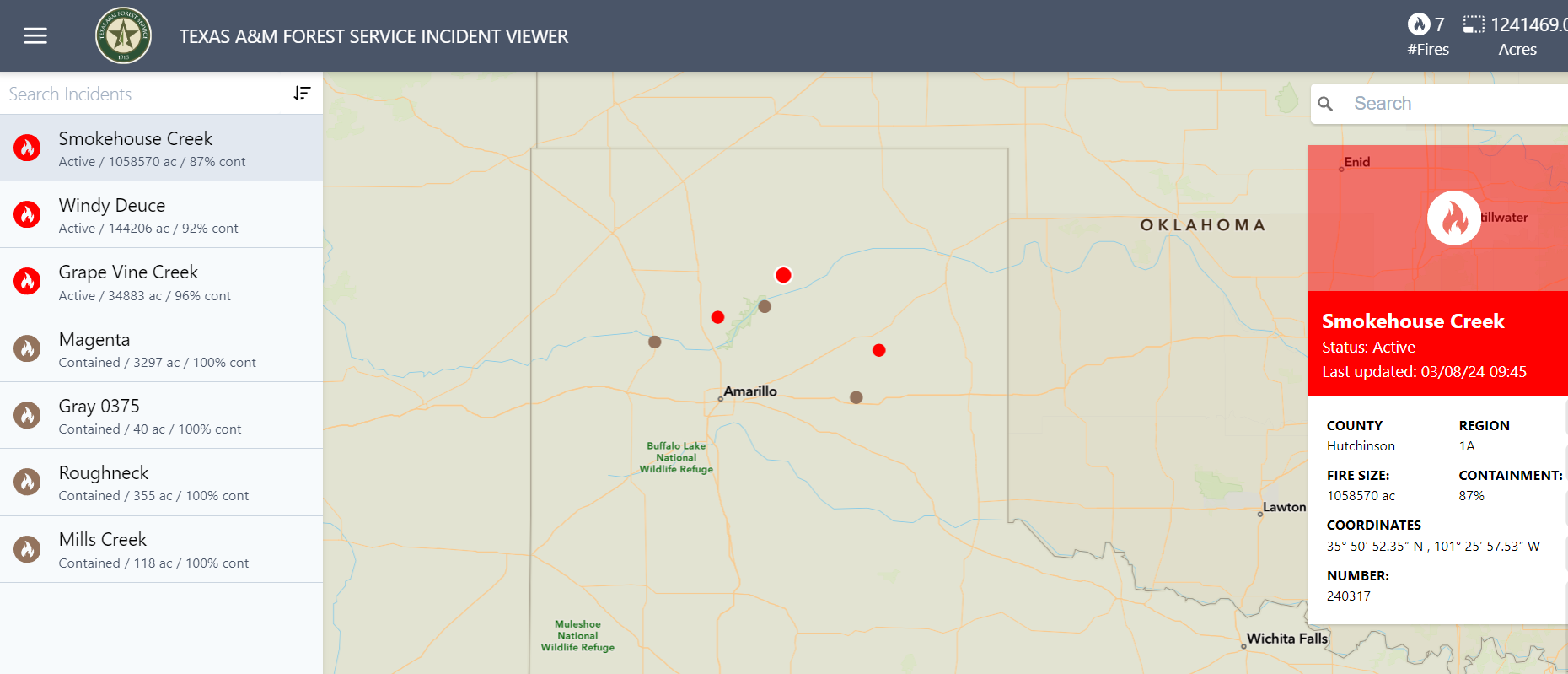
The Windy Deuce Fire also started that day and the forest service concluded that it was also sparked by a powerline. “That fire was reported at 6:23 p.m. on Feb. 26 at an oil field and was caused when a power line that ran directly through the top of a small tree made contact with tree limbs,” a forest service report concludes. That contact caused a spark or molten metal that fell into the grass below.
Smokehouse Creek Fire
The Smokehouse Creek Fire has burned more than 1 million acres in the Texas Panhandle since it started two weeks ago on February 26th. The fire has covered an area larger than Rhode Island.
Unfortunately, 2 people have died and the fire has destroyed at least 30 homes in the town of Canadian, Texas, and over 100 homes in Hutchinson County, Texas. In addition, at least 11,000 people were left without power following the destruction of power lines and miscellaneous infrastructure.
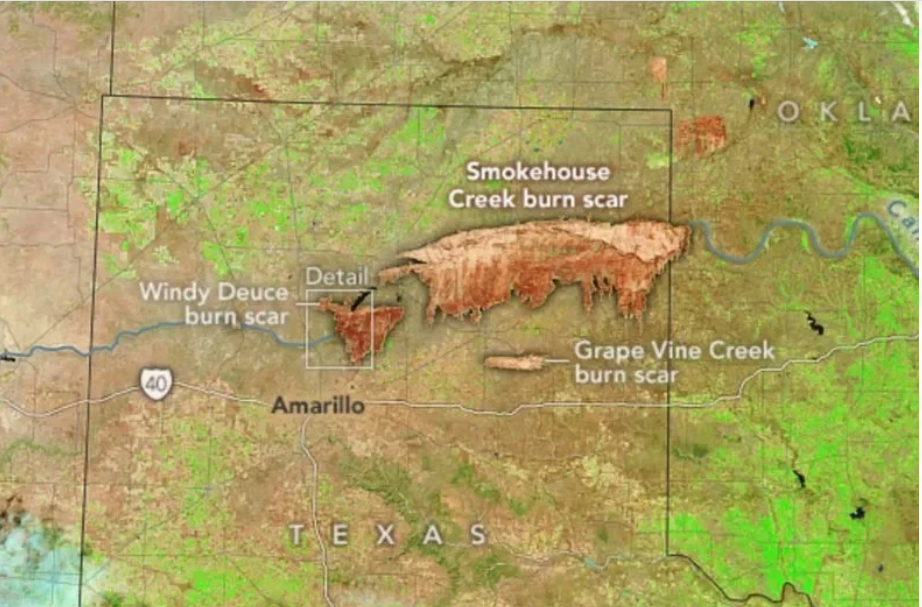
The Panhandle is the largest cattle region in the U.S., and according to state agriculture commissioner, Sid Miller, is home to about 85 percent of the roughly 12 million cattle in Texas. Here, the fires have devastated many ranches, killing thousands of cows and other animals, charring croplands, and destroying hundreds of homes throughout the small communities in the region.
As of March 9, 2024, 87% of the wildfire has been contained.
Weather Contributed
That day, the weather conditions were highly conducive to the spread of fires, with hot temperatures and gusty conditions prevailing over the region. Temperatures topped out in the low 80s that day which is 20 degrees above normal and set a new record in Amarillo. Also, rain had been scarce with only a third of an inch falling in February and a dry frontal system moved in which made winds gusts to over 70 mph!
Over the last few months, rain had increased over the region thanks to an El Nino weather pattern but overall, there was still a deficit over the last 3 years.
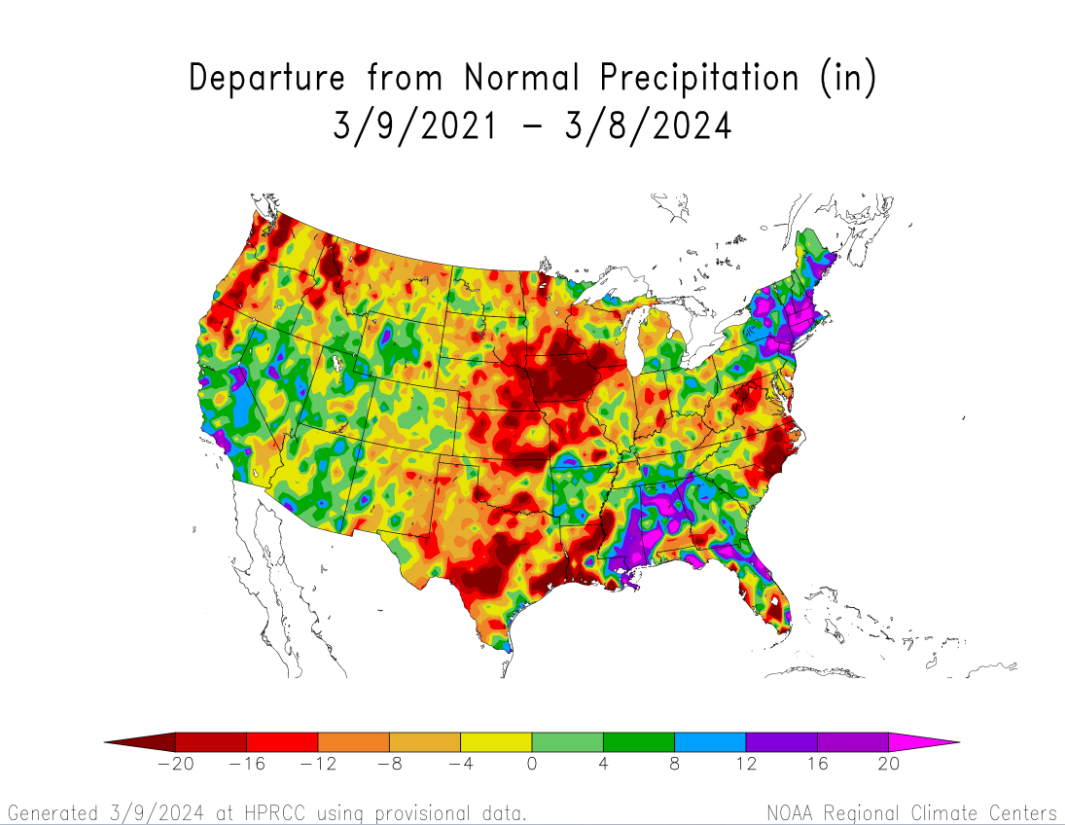
Luckily, the latest drought monitor looks promising for the Texas Panhandle as we head into the year's wettest months.
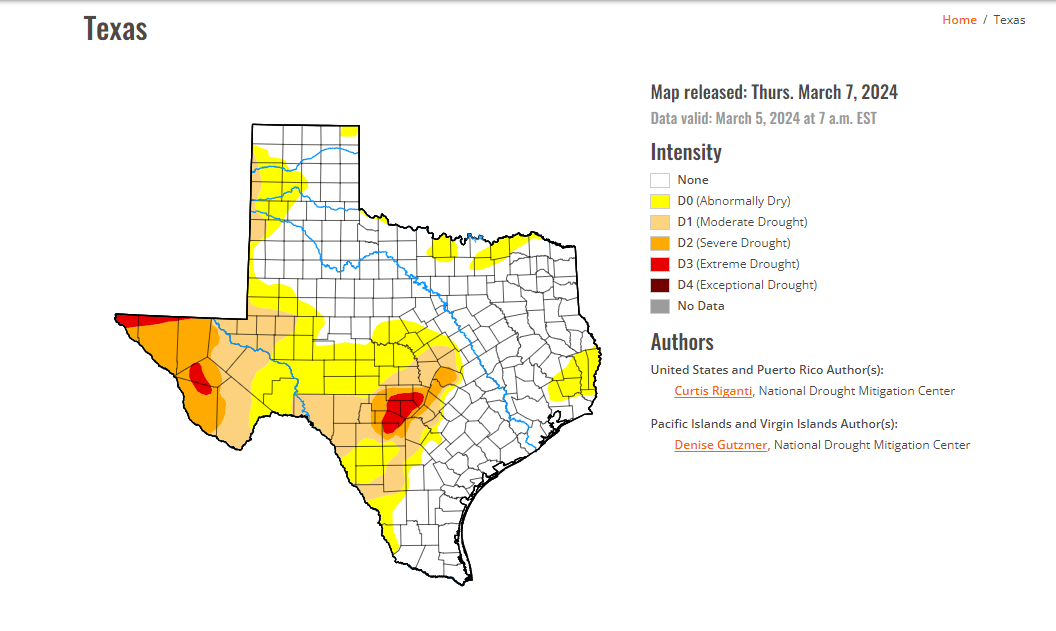
Wildfire Season in Texas
According to Texas A&M Forest Service, the Texas wildfire season typically occurs during the summer months for most of the state. However, in the Panhandle region, the greatest risk of fires occurs around March due to rising temperatures, strong winds sweeping across the flat terrain, and the presence of dry grass that easily ignites.
Approximately 90 percent of wildfires are caused by humans and their activities, and holidays and celebrations can increase the risk of fire starts.
To help prevent wildfires during windy and dry conditions:
• Avoid parking and idling in tall, dry grass. Catalytic converters can get hot enough to ignite the grass under a vehicle.
• Ensure chains and other metal parts aren’t dragging from your vehicle — they throw sparks.
• Avoid placing your grill near flammable vegetation or materials, never leave your grill unattended, and ensure coals are completely extinguished when you are done.
